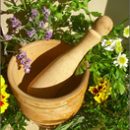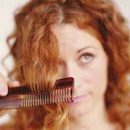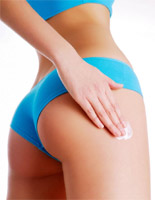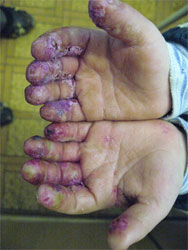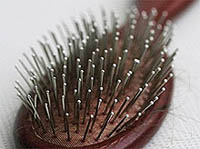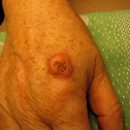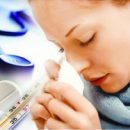Fungal skin diseases (mycoses) are caused by microscopic fungi, which parasitize on the skin and mucous membranes of humans and animals.
Content
Saprofit mushrooms (fungi), mostly yeast genus Candidas, constantly live on our skin, in the mouth, on the genitals, without causing pathological changes. But they can cause skin diseases and mucous membranes, especially in infants, if the skin is excessively wet. The growth of fungi contributes to the suppression of bacterial flora - as a rule, with long-term use of combinations of wide spectrum antibiotics.
The harmlessness of most of these fungi is relative: in the case of a decrease in immunity, they become aggressive, penetrate the skin and mucous membranes, and even worse - in blood flow, in organs and tissues, causing extremely severe lesions. Fortunately, this is rare - only with rare cases of congenital immunodeficiency, in patients with AIDS and in the treatment of malignant diseases. Therefore, under development «Deep» Mushroom defeats must definitely find out the reason for the resignation of the body's resistance.
Another part of the skin diseases is caused by pathogenic fungi living in animals.
Yeast fungi
These yeast fungi inhabit our skin and mucous membranes, their growth is controlled by both the immune system and other microbes living on these surfaces. If you suppress the activity of microbes with antibiotics, candida «come to life» and manifest themselves like pathogens. Stimulates the growth of yeast fungi and skin integrity, its constant moisturizing.
The disease caused by yeast mushrooms in infants is called diaper dermatitis, it is manifested by redness of the skin with clear contours, the formation of scales along the edges of the inflamed plaque, sometimes with bubble elements.
 Candidiasis in infants is developing in the form of thrush - white loose impositions appear on the mucous membrane of the mouth, usually not accompanied by a child's concern. Often they arise against antibiotic treatment. Defeat is harmless, but a stubborn thrush can talk about the presence of a child of immunodeficiency, which requires a survey.
Candidiasis in infants is developing in the form of thrush - white loose impositions appear on the mucous membrane of the mouth, usually not accompanied by a child's concern. Often they arise against antibiotic treatment. Defeat is harmless, but a stubborn thrush can talk about the presence of a child of immunodeficiency, which requires a survey.
At older children, candidiasis is usually developing in folds - in groin, in the armpits, under the chest glands, between the fingers, around the rear passage. In its development plays the role of enhanced sweating during an inadequate toilet. According to the type of lesions, they differ little from those with diaper dermatitis.
Candids sometimes cause nail lesions - they become dull, thicken. Candidiasis of the genital organs among girls and women (vulvovaginitis) is manifested by discharge and itching, sometimes very strong, in young men - inflammation in the cavity of the foreskin (Balantostitis). The disease can also be associated with taking antibiotics, steroid drugs, to be a consequence of the reception of contraceptive pills.
Treatment of the skin of the skin requires primarily improving the care of it - more frequent swaddling and kneading a child with careful drying of the folds, the use of sprinkles, when irritating the folds - ointments. Senior guys should also follow the hygiene folds, avoid long-term skin moisturizing.
For treatment, antifungal ointments with clotrimazole, ketoconazole and others are used; Since the allergic component is often present in candidiasis, the use of combined ointments - antifungal and steroids is justified.
During the thrush, irrigation of the mucous membrane of hydrogen peroxide, sugar syrup, the rapid effect occurs during local treatment with pimafucin, clotrimazole, miconazole, in persistent cases of the doctor's prescription (dyphlukonazole) or fluconazole (diphukan) inside. Infections of genitals are treated with the same ointments or vaginal candles. Nystatin due to small efficiency and toxicity should not be applied.
Lishe Streaming
Now parents are rarely found with a harsh deprive. A ringless deprived - a collective concept, they designate a group of fungal diseases, which are sometimes called the type of dermatophyte mushrooms - trico, microsporeium. The source of infection is dogs and cats (kittens), but it is possible to infected the fungus not only from animals, but also from a person, for example, through a comb, although in our time it happens rarely; In hairdressers, combs and other public items are disinfected. So now street dogs - the main source of infection. But also homemade cats if they communicate with streets, may be infected.
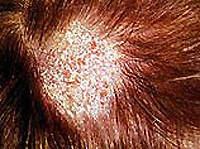 The disease is easily diagnosed by the type of lesion, for identifying fungi they are considered under a microscope (skin scraping) or grown on nutritional environments.
The disease is easily diagnosed by the type of lesion, for identifying fungi they are considered under a microscope (skin scraping) or grown on nutritional environments.
A child in the affected areas arise one or more foci with a non-surge inflammatory response. The skin in the focus thickens, covered with scales containing mushroom disputes. In the area of the hearth, the hair turns out to be broken in 5–7 mm from the root («Hemp»), they are surrounded by inflamed skin. The focus with late detection and treatment increases in size, appear and «Daughter» Foci. In the launched cases, purulent bubbles are formed, combs are infected with bacterial flora, and then the entire head is covered with purulent crust - now such forms are not observed.
Having reveaning a harsh debris, it is necessary to consult a doctor, since the treatment includes a long course of antibiotic antibiotic, ketoconazole. Local treatment of such a disease (with iodine lubrication, ointments, tar, etc.) It is ineffective, although many dermatologists prefer to combine the reception of griseofulvin with ointments acting on fungi.
The patient should be removed from the children's team to cure. Persons in contact with him should periodically examine - whether they were infected. With modern treatment to shave the head, remove the hair and wear a hat do not need.
Lisite on smooth skin
This disease is caused by the same dermatophitis fungi, which is deprived of the scalp, the source of infection is the same.
Skin lesion has a rounded or oval shape with clear boundaries. The defeat slowly grows, in the subsequent becomes ring-shaped; More or less normal skin in the center speaks about cure, the periphery of the lesion shows small nodules that form a whin. Sometimes nails are involved in the process - they thicken, crumbling.
Masi miconazole, clotrimazole, ekonazole, naphtyphin, rollerftat, cyclopirox are used, 1-2 times a day for four weeks. With ineffectiveness, ointments are carried out by a course of griseofullvin or lamisil. Under the defeat of the nails, Lateryl, Lamizil, Exoderil.
Few-shaped lichen
This disease causes two special mushrooms, different from the causative agents of the rings. The disease is contagious, although less than a ringless deprived.
On the smooth skin of the back, neck, extremities, sometimes yellowish brown spots appear on the moole of the head; The disease got its name from the type of lesion - when starting it, the petty, like bran, peeling.
Treatment is carried out by locally nitrophin, the xoseptine, miconazole, resorcin alcohol. Since the fungus can negle in other areas of the skin, without manifesting for some time, all the skin is recommended to lubricate 25% sodium thiosulfate solution twice a day for two to four weeks or, simpler, 2.5% - m solution of sulfide selenium once a month for three months.
Diseases caused by Rubrofiton and the epidermofute
The disease is caused by a group of related fungi (Rubrofiton, epidermofiton) living on our skin. Infection comes from patients most often in shower pools or baths. These diseases are usually found in children over seven years old and adults. In the development of the disease plays the role of increased sweating of hands and feet, as well as inguinal folds, where the main lesions are localized.
The lesions usually have the form of reddish elements, sometimes fesching with peeling; they are little bothering the patient - they do not hurt and do not bope. Often amazed and nails, they thicken, become dull, scaly. During the defeat of the purses of the scaffold of the scalp, sometimes you can see the reddish, covered with flaxes or fester elements.
Treatment of these diseases requires elimination of excessive skin moisture. Locally used nitropungin, ointment bifonazole, myxptin, clotrimazole, miconazole, terbinafin. In persistent cases, with permanent relapses, the use of inward ketoconazole or fluconazole for four to six weeks is justified (maybe two or three times a week).
With the defeat of the nails earlier, it was necessary to resort to removal, now you can cure the nail from the fungus using exodeterily under the plaster, lacenis, lamisil. I do not recommend, however, apply these funds yourself - the drugs are not devoid of side effects and sold on recipes, and ointments for the treatment of nails are not suiced, so the doctor's council can help you save money.

